Why should you walk through this South Florida cemetery? You may get a good laugh
How about a nice stroll through the cemetery?
Maybe it’s not your first choice for a walk, but this is no ordinary cemetery.
In Key West, some of the dead have a message. And a few will make you laugh.
On one grave: “I Told You I Was Sick.” On another: “If You’re Reading This, You Desperately Need A Hobby.” And one says: “I Always Dreamed Of Owning A Small Place In Key West.”
Key West’s historic cemetery is even on many must-see lists for visitors. The sightseeing Conch Train rolls by regularly. And the Southernmost City, along with the Historic Florida Keys Foundation, organizes monthly tours.
The last two series of 90-minute walking tours of the season are planned for Feb. 12 and March 5. Reservations are required and a $20 donation is suggested. To reserve, call 305-304-1453 or email hfkf@bellsouth.net.
Tour guides will escort visitors to grave sites and tell their stories.
And there are plenty of stories to tell.
Let’s comb through the archives of the Miami Herald for a look at the Key West Cemetery.
Touring the cemetery
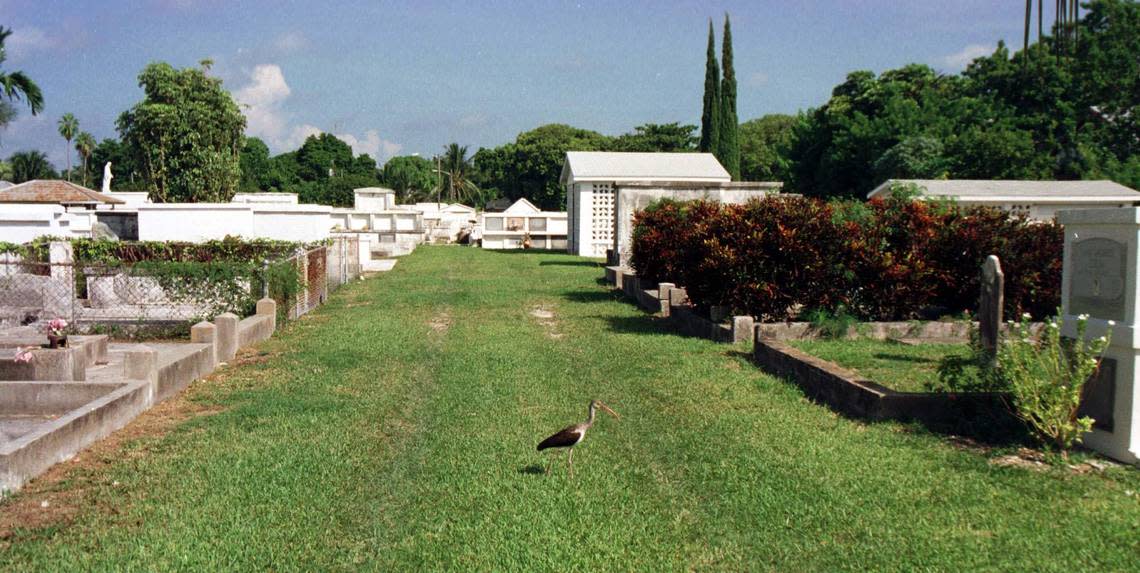
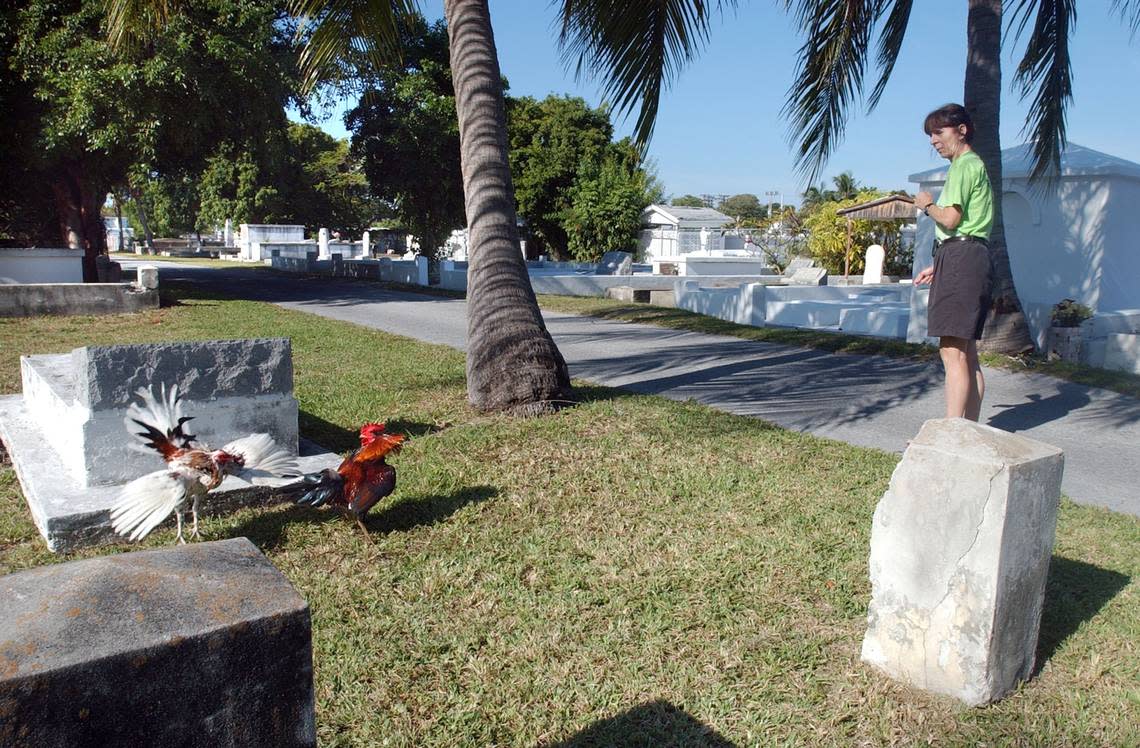
Published Oct. 23, 1994
By Susana Bellido
This city turns to it for family and history, for strolling and bird-watching, for solemnity and eccentricity.
The Key West Cemetery, on the circuit for tourists sightseeing on the Conch Train and residents riding bikes or mopeds across Old Town, is back on the attractions track. Members of the Historic Florida Keys Foundation are once again conducting one-hour tours of the cemetery, featuring its history, artistic features and unique touches.
Its most popular stop is a grave marker that reads: “I Told You I Was Sick.”
Preservationists started the tours in 1989 to highlight the variety of tombs at the cemetery and their need for restoration. But the tours stopped when the guide moved out of town.
“We want to raise public awareness of what’s here and the fact that this is a really wonderful park-like atmosphere,” said Sharon Wells, the historian who conducts the tours. The foundation is also doing a survey of the cemetery’s grave makers and pushing for the restoration of its dilapidated elements.
Key Westers moved their cemetery to Solares Hill, the island’s highest spot, in 1847 after a hurricane disinterred bodies in the old cemetery near the ocean. Some of its tombs, apparently transplanted from elsewhere, go back to 1813.
The cemetery has Jewish and Catholic sections, areas for sailors from the USS Maine and for Cuban martyrs, plots for priests and for children. The above-ground tombs, the Latin elements -- such as the use of photographs of the deceased on markings -- and several quirky details make it stand out.
Epitaphs include such inscriptions: “Devoted fan of singer Julio Iglesias,” “Harry, I know where you are sleeping tonight” and “God was good to me.”
In her tour, Wells relates Key West history to cemetery statuettes, materials, dates and names.
She may point out, for instance, the elaborate graves of the prominent Otto family and their deer and three terriers (all buried in a fenced-in plot), the tomb of the woman who initiated the preservation movement in Key West, or the plot of the families that shipped their houses from the Bahamas when they immigrated.
One of Wells’ favorites spot is Archibald John Sheldon Yates’ 1966 tomb, decorated by a sculpture of a naked woman, her hands bound behind her back.
“We don’t really know the story, but you can conjure up all kinds of things,” she said. “And then again, who knows? He could have been a sculptor.”
Last words at the Key West Cemetery
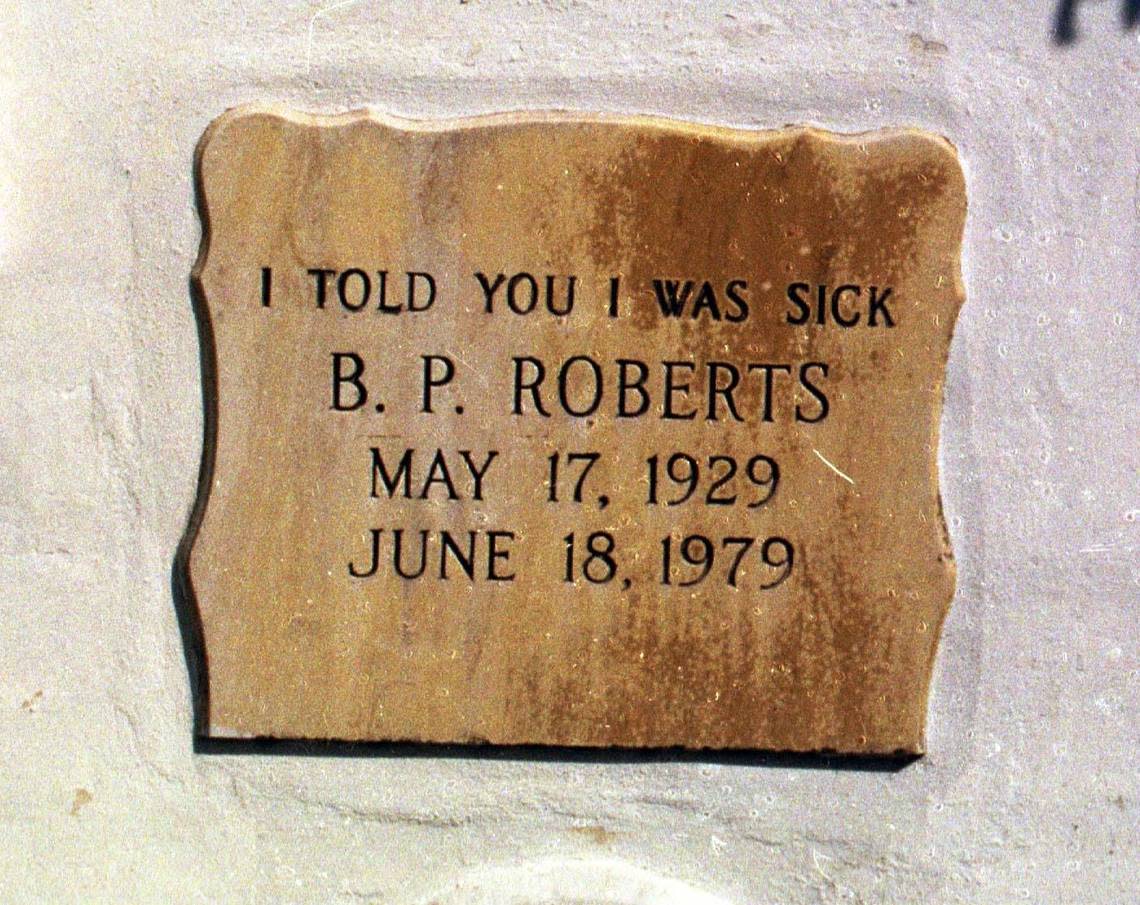
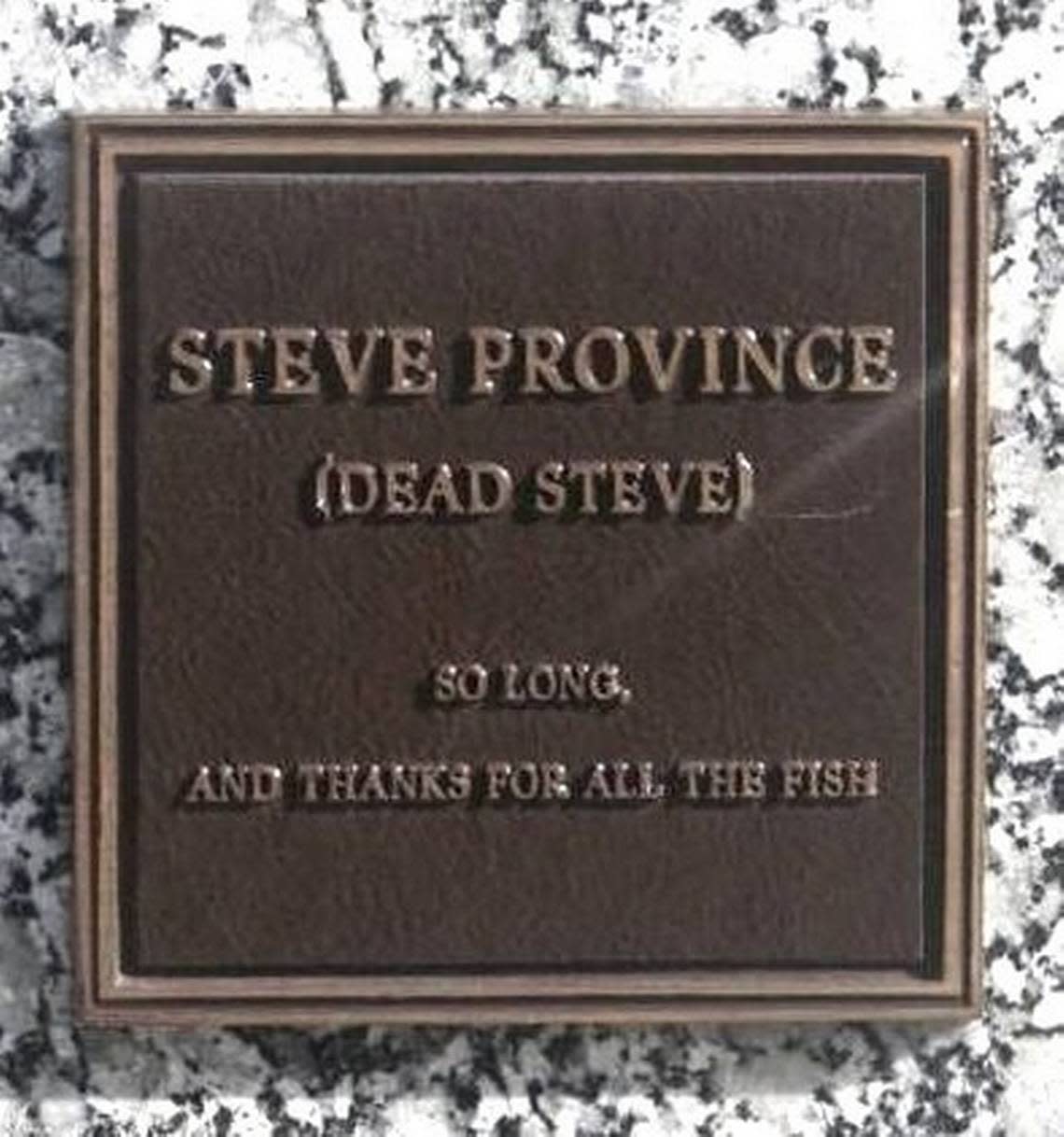
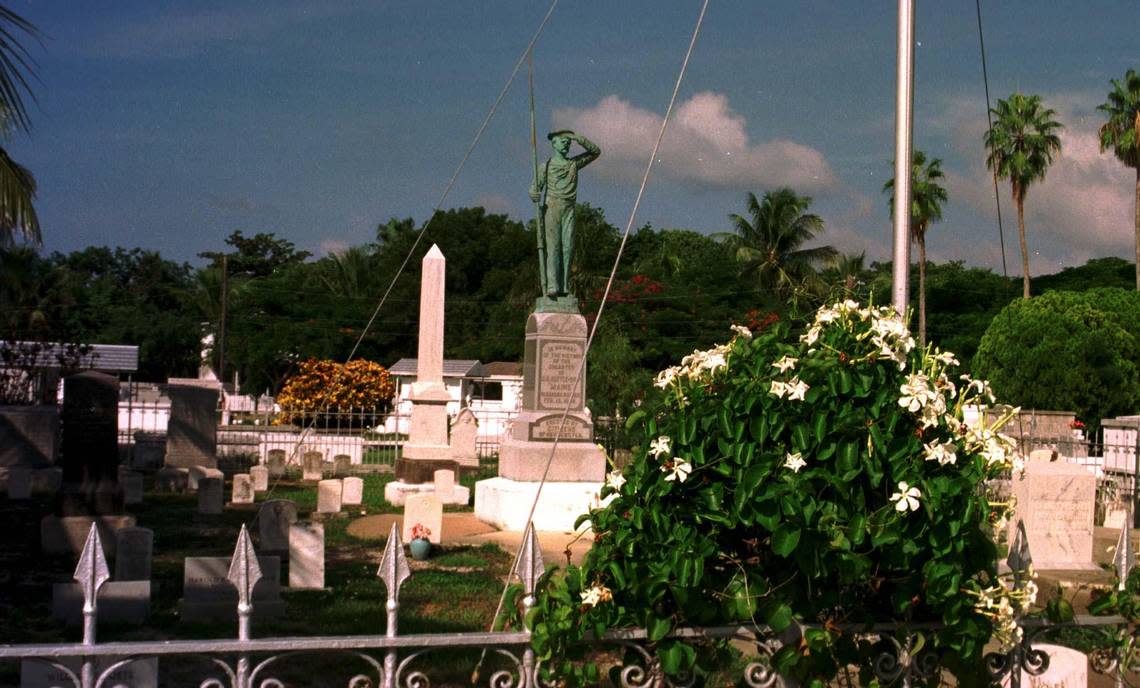
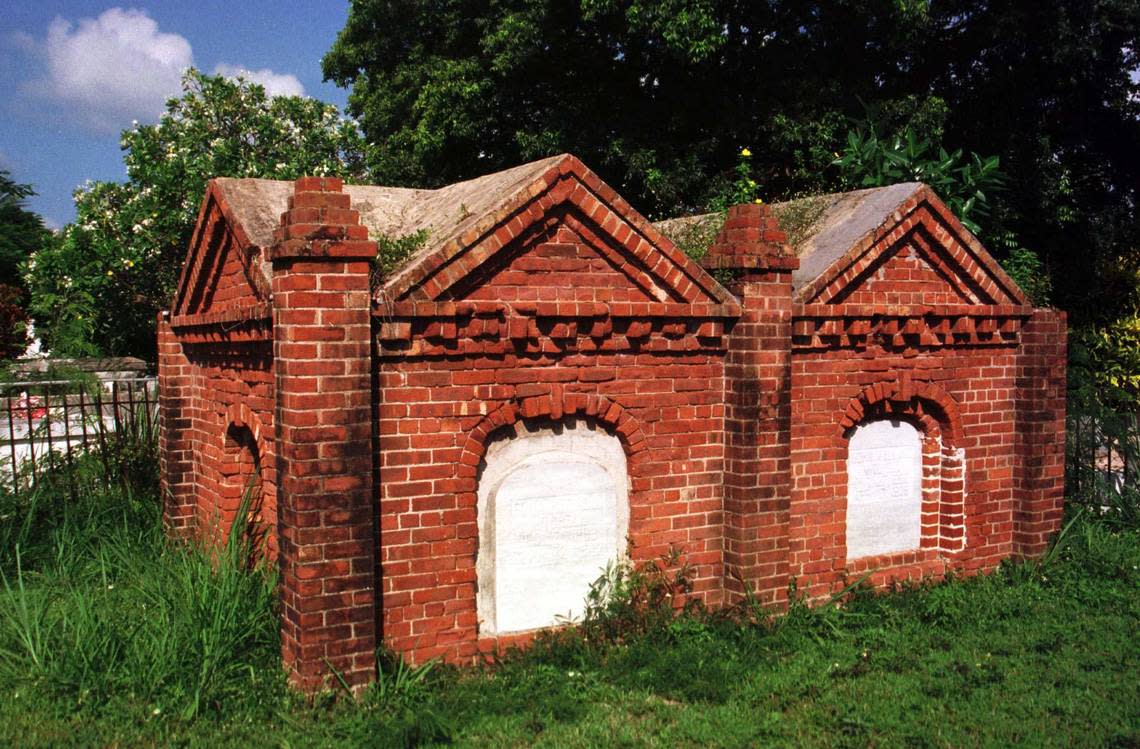
Published Aug. 4, 2016
By Nancy Klingener, WLRN
When Patty Tiffany leads tours of the Key West Cemetery for the Historic Florida Keys Foundation, there’s one gravestone that gets a lot more attention than the elaborate gravesites and mausoleums at the cemetery, which dates back to the middle of the 19th century.
That would be the grave of B.P. “Pearl” Roberts. It’s a simple stone with a famous inscription: “I Told You I Was Sick.”
“I think the idea of combining humor with tragedy is what makes it so appealing,” Tiffany said.Cemetery sexton Russell Brittain gets a lot of inquiries about that grave.
“If I had a dollar for every person who’s asked me where that monument is,” he said, “I’d be a multimillionaire.”
Roberts died in 1979. Over the decades her marker has become the best-known in the cemetery. The Key West Cemetery was established in 1846 and is still active. Brittain says there are an estimated 60,000 to 100,000 gravesites, even though the cemetery was initially designed for 15,000. Graves reflect the long history and diversity of Key West, and range from simple markers to elaborate mausoleums.
In recent years, on one of the newer mausoleums in the cemetery, a collection of newer epitaphs has quietly gone up, many of them offering their own wry commentary.
There’s one that says, “If You’re Reading This, You Desperately Need A Hobby.”
Another says, “I Always Dreamed Of Owning A Small Place In Key West.”
A couple of them are literary references. Like “So Long And Thanks For All The Fish,” which is from “The Hitchhiker’s Guide to the Galaxy” series by Douglas Adams. Another says “GROK - Look It Up.” That’s from the novel “Stranger in a Strange Land” by Robert Heinlein.
All of these epitaphs are on one wall. Brittain said there was no intentional effort to group them together. But he has noticed that they’re all on the end of the mausoleum, which is reserved for cremation burials.
“I’m not sure why” the new, unusual epitaphs started appearing, Brittain said, “but maybe it’s because they’ve been cremated and they thought they want to leave their mark on history.”
Brittain said he hasn’t received any complaints about the epitaphs - although he did get a question about one of them.
“When I submitted the order to the bronze foundry,” Brittain said, “they called me back and they said, ‘Are you sure this is what you want on this headstone?’ “
That was the marker for Giorgio Aversa, who died eight years ago.
This is the epitaph: “Jesus Christ, These People Are Horrible.”
His wife, Amy Culver-Aversa, chose those words.
“The reason why the epitaph reads like this is because we would go out socially sometimes or we would meet people and he’d go, ‘Jesus Christ, these people are horrible!’ “ Culver-Aversa said. She said Giorgio would say that “20 times a day.”
And there was another reason she chose such an unusual epitaph for her husband, who died by suicide.
“Because of the tragedy of his death, I didn’t want that to be the last marker,” she said. “So to go and visit him, I wanted to laugh.”
Brittain said his concerns about the epitaph were alleviated when he realized where it would be in the mausoleum.
“It just happens that it’s on the very top. It’s about 10 feet in the air,” he said. “And if you don’t know it’s there, you won’t see it.”
Culver-Aversa said a couple of people questioned her about the headstone. But when she explained it, they understood.
“I think it has more of a tether to the heart than some one-liner that, you know, you picked out of a cemetery book,” she said.
And, Culver-Aversa said, it has the intended effect. When she visits Giorgio’s grave, she laughs. And that makes her want to visit more often.
New life for the cemetery
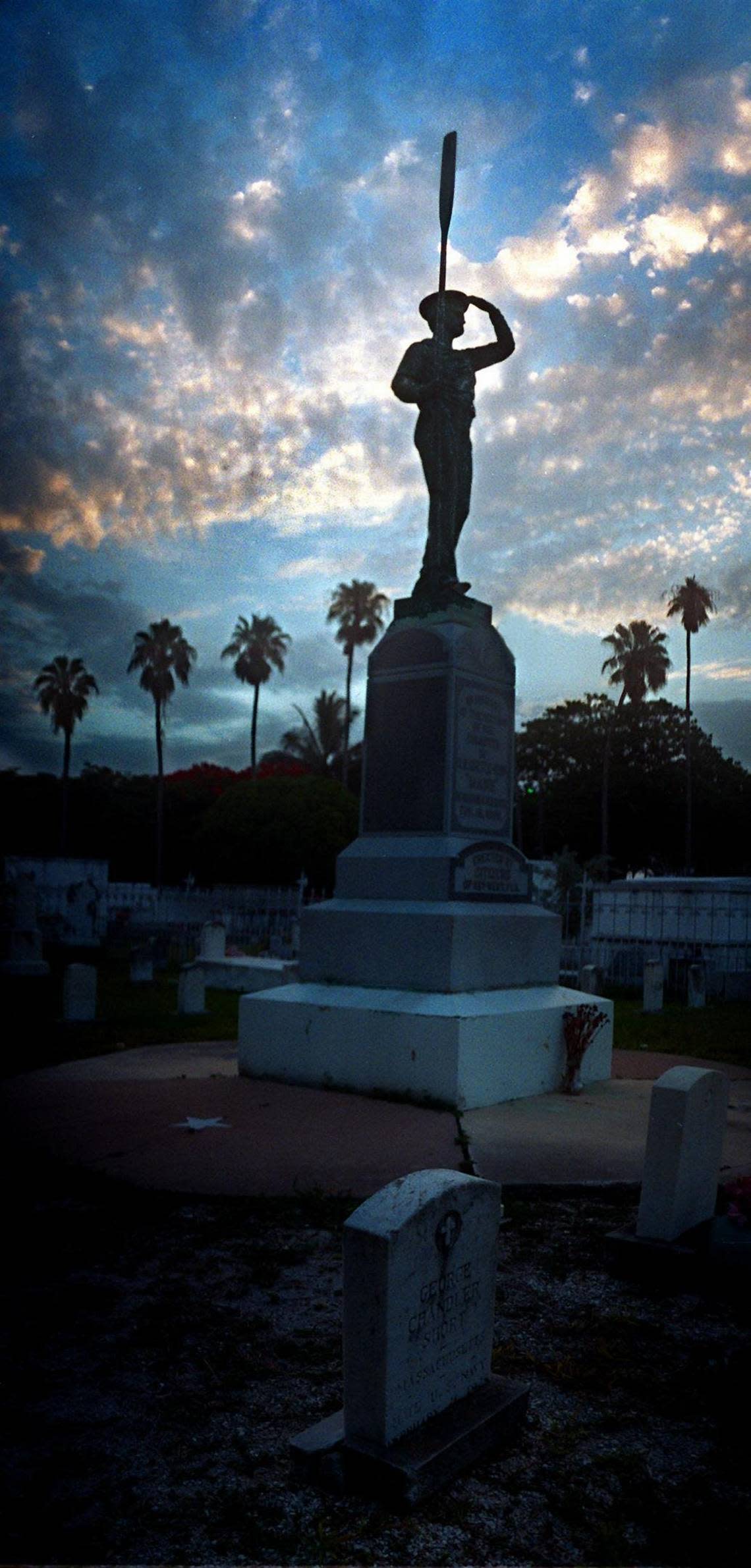
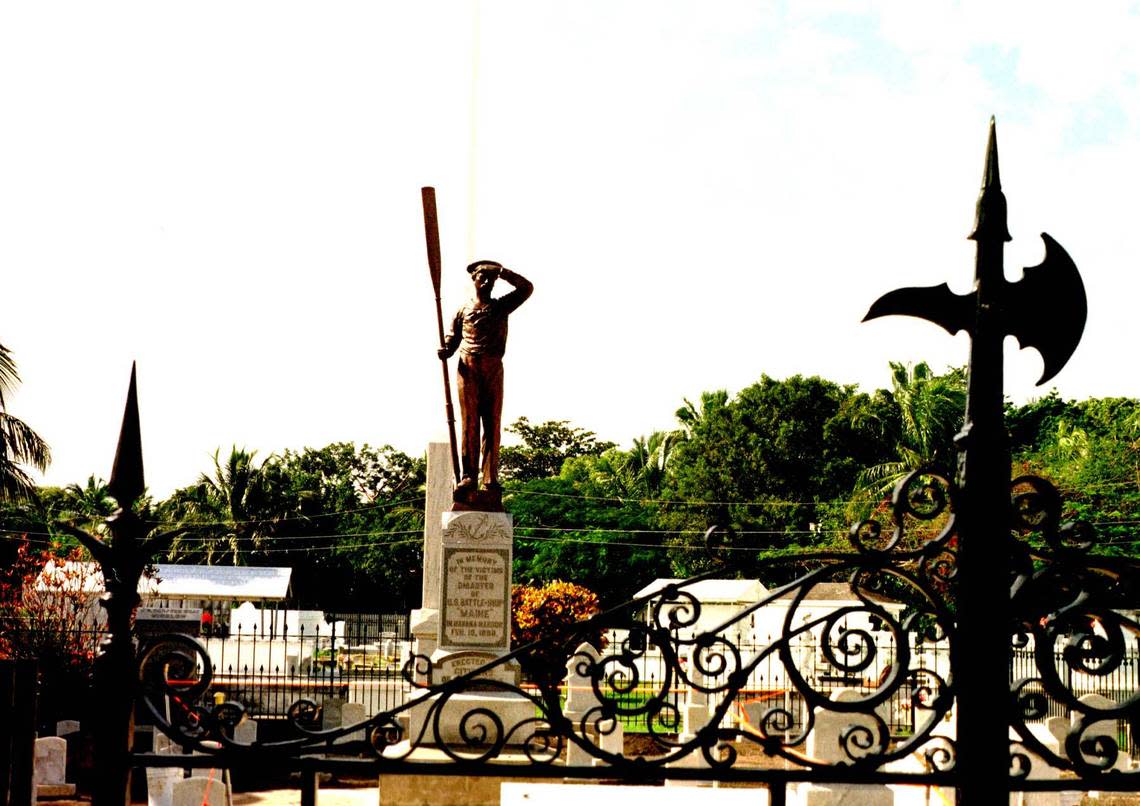
Published July 9, 2006
By Cammy Clark
In the middle of the historic Key West Cemetery, a white marble statue portraying grieving mother Mary Navarro, looks down at the tiny child statue above the grave of her daughter, Rosa, who died in 1903.
More than a decade ago, a vandal had decapitated the statue above the girl’s grave. Then somebody tried to repair the damage with gray cement - and “only made things worse,” in the view of sexton Russell Brittain.
Now, after years of wear, tear and neglect on the 160-year-old cemetery, Key West is ready to start making things better.
At the Key West City Commission meeting last week, the board officially accepted a $300,000 grant from the Florida Department of State’s Division of Historical Resources.
The grant was the culmination of 10 years of effort by the city to get funding to restore and preserve the cemetery, which is the resting place of as many as 100,000 people. It’s also a newly named Florida Heritage Site.
Diane Silvia, historic preservation planner for the city, said the cemetery is both an historical site and tourist attraction.
“It’s just a very, very unique cemetery because it’s the only one located here in Key West,” Silvia said. “It really is the history of Key West. Anyone who lived here and settled here generally is buried here.
“I can’t believe how many visitors go there. People who come on cruise ships. People from other countries.”
Brittain estimates that the cemetery draws 50,000 visitors annually. In one year, he said, people from 45 states and 22 countries signed the guest book.
They come, in part, for stories - like that of Rosa Navarro. According to burial records, she died of a skull fracture after falling out of a window in New York on Aug. 13, 1903. She was 9. Jane Newhagen, a researcher at the cemetery, said legend has it the cemetery’s memorial scene depicts the admonishment of the mother to her child: “Mommy said, ‘Don’t go near the window.’ “
Four years after Rosa’s death, Mary died at age 44. On the back of her statue, the inscription reads: “To the Sacred Memory of a Broken Hearted Mother.”
George Born, executive director of the Historic Florida Keys Foundation, has been giving tours of the cemetery twice a week for the past 10 years.
He begins most tours by explaining that the cemetery was built on the “high ground, 16 feet above sea level” of Key West in 1947 after the 1946 Hurricane destroyed the original graveyard. Remains had been disinterred and scattered across the island, with some corpses coming to rest in trees.
Born’s tour includes notable Key West residents, including “Sloppy” Joe Russell (Ernest Hemingway’s fishing guide and barkeep), who on a recent day had an inexplicable Mr. Potato Head on his headstone.
While vandals are responsible for some damage to the 19-acre cemetery, most of the monuments, tombs, headstones, cast-iron plot enclosures, copings and roadways that need work are simply the victims of time, neglect and, most recently, Hurricane Wilma.
That storm’s damage included knocking over the gate to the Jewish section of the cemetery run by the local B’nai Zion Synagogue.
Silvia said once the grant agreement is signed by the state, likely within the next few weeks, the first thing that must be done is to solicit bids from companies around the country that specialize in cemetery restoration and preservation.
“There are not that many that do this work,” she said. “People forget a lot of the materials used were imported. They’re delicate and fragile. You just can’t scrub the heck out of it. And a lot of things are broken and need to be mended.”
Silvia said she does not know how much work can be done for $300,000 until the bids are received. But she said it’s likely that multiple companies will be needed for the different kinds of restoration.
“We probably can’t do everything so we’ll have to prioritize,” she said.
“We’ll work first on the most deteriorated and things that obviously have been abandoned.”
Brittain said one of the first choices is Joseph Wall’s 158-year-old marker above his grave, which is at the entrance of the cemetery’s main gate on Passover Lane.
“See how the bricks are broken,” Brittain said. “People like to look in there and see if they can see anything - which they can’t.”
A monument that will receive attention is that of William Curry, Florida’s first millionaire, who died in 1896. The urn on top of the 25-foot monument fell to the ground. Silvia said a cherry-picker truck likely will be needed to return the urn to its rightful spot.
Silvia said the “wedding cake” grave site that belongs to Walter Maloney also will be a priority because of its uniqueness. It is shaped in tiers, but as Born said about the crumbling structure: “It’s losing some of its frosting.”
“All things are pretty important,” Silvia said. “But the ones that are real specialty items and historic and abandoned will get priority. We’ll see how much we can get done.”
Notable graves
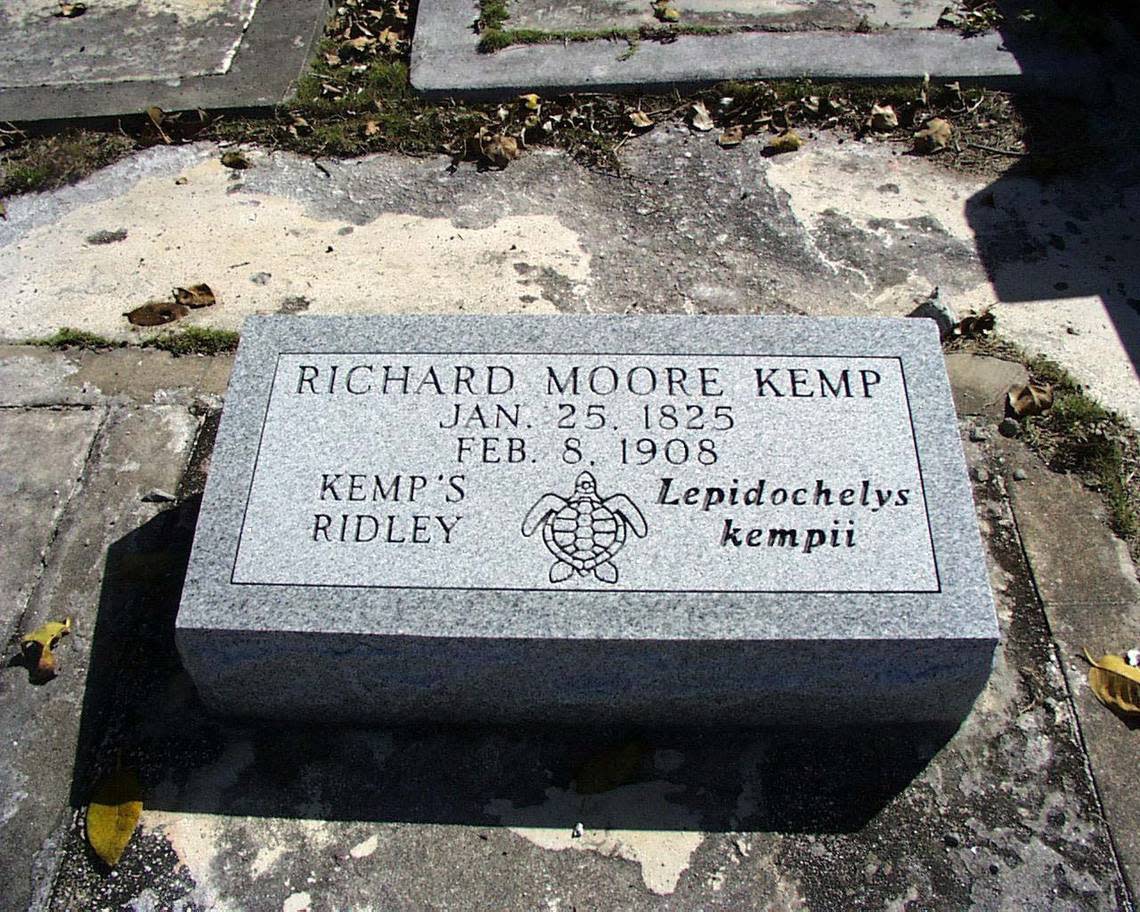
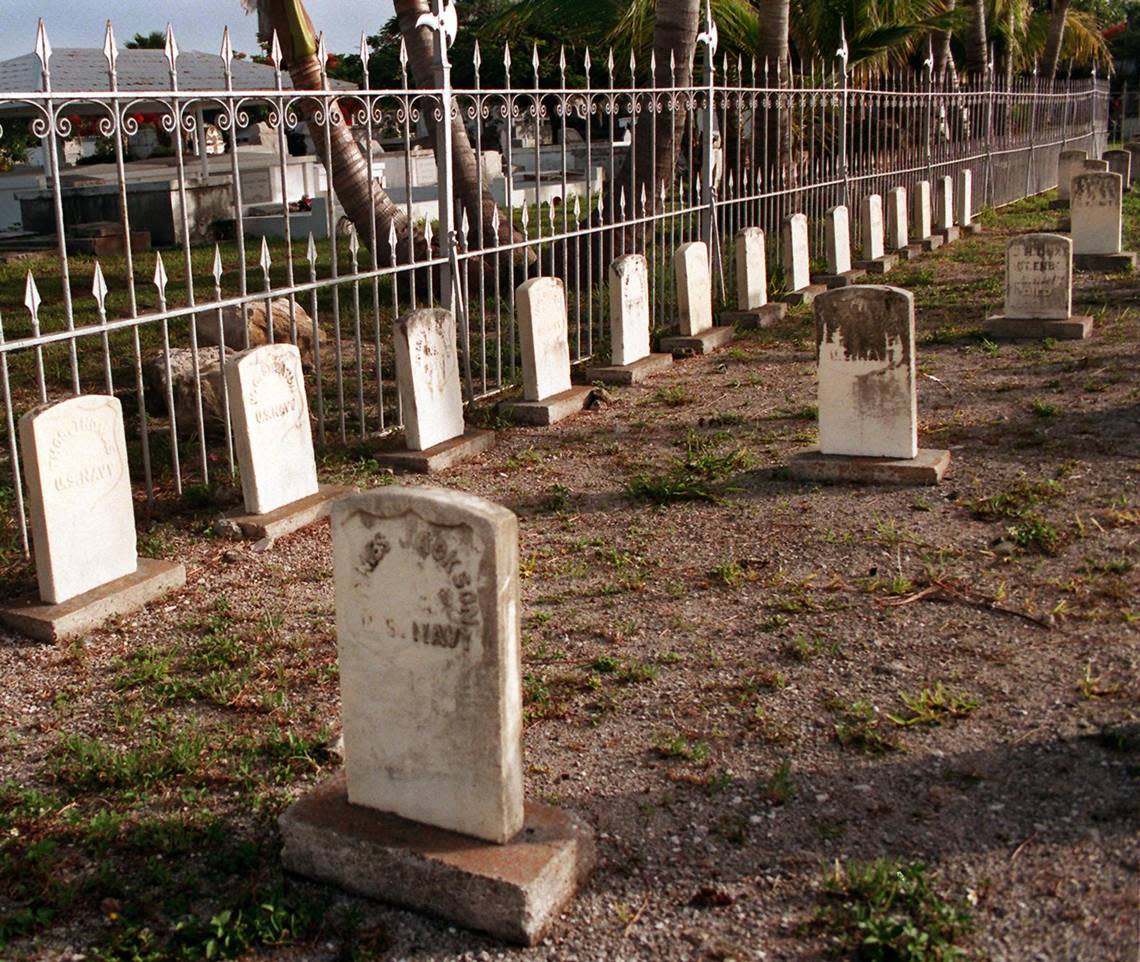
Here are some of the more notable graves:
▪ U.S.S. Maine Monument: Buried in the plot are about two dozen of the 260 American sailors who were on the ship when it blew up on Feb. 15, 1898, in Havana Harbor. The disaster led to the United States’ declaration of war on Spain.
▪ Ellen Mallory (1792-1855): She came to Key West in 1823 as one of the first female settlers. She ran the town’s only boarding house, ‘Cocoanut Grove.’ Her son, Stephen, became a U.S. senator and secretary of the Confederate navy. Tourists now go to ‘Mallory Square’ to see sunsets.
▪ William Curry (1824-96): He arrived in Key West in 1847 from Green Turtle Cay in the Bahamas and made his fortune through mercantile activities to become Florida’s first millionaire.
▪ ‘Sloppy’ Joe Russell (1889-1941): He was Key West’s best-known barkeep and fishing guide to Ernest Hemingway in the 1930s.
▪ B.P. ‘Pearl’ Roberts (1929-79): She was a local waitress and hypochondriac, whose vault marker is noted for getting the last word: ‘I Told you I was Sick.’
▪ Piedad L.F. de Ayala (1859-91): Her grandfather wrote the Cuban national anthem.
▪ The Otto Family plot: While the family members included doctors, pilots and artists, most look at it because of the family pets: Elfina the deer and three Yorkshire terriers.
▪ Los Martires de Cuba: The monument was erected in 1892 to honor those who died attempting to free Cuba from Spanish rule during the Ten Years War. Only Cuban Consul Antonio Diaz y Carrasco is buried there.
Struggling cemetery in the early 1990s
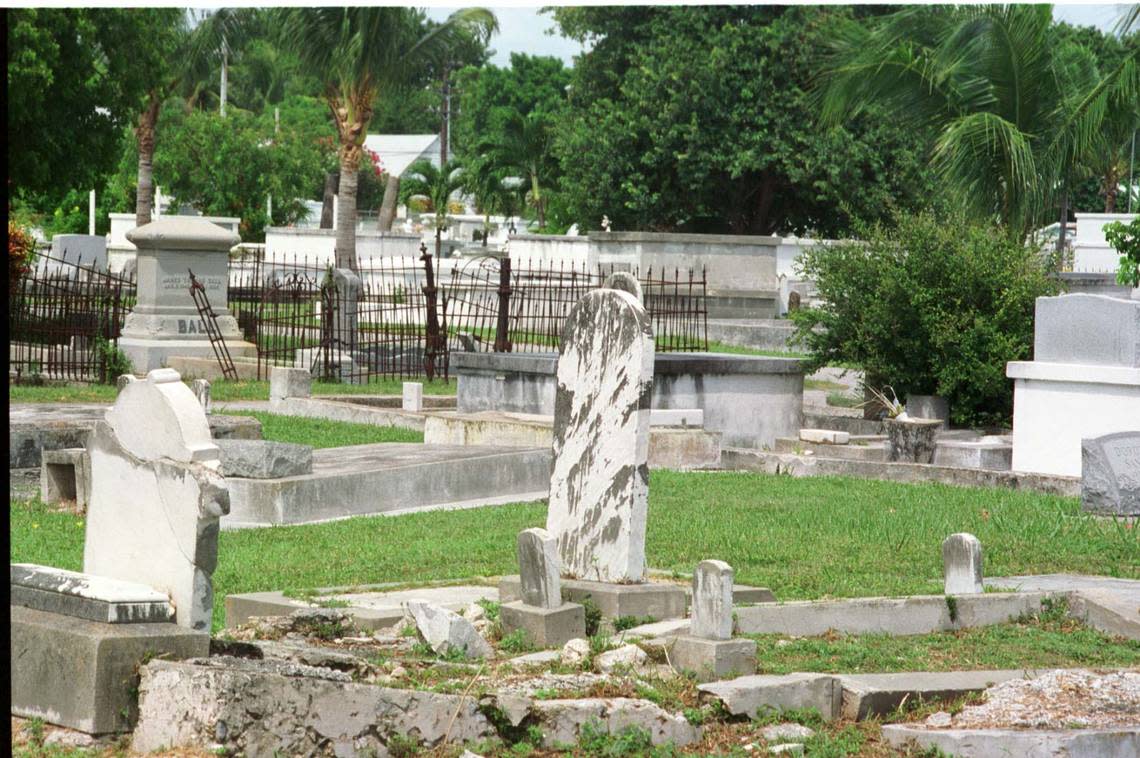
Published April 28, 1991
By Nancy Klingener
Key West’s cemetery - final resting place for the island’s residents and repository of its varied history - is cracking, crumbling and sinking.
It’s also torn by the same development pressures seen everywhere else on the island -- the conflict caused by too many people wanting to crowd into the same small piece of land.
For devotees and tourists, the cemetery is a fascinating outdoor museum. Some of the island’s earliest settlers and most outlandish characters are here. Some of its most famous folklore is here, too.
Famous inscriptions include “Harry, I Know Where You’re Sleeping Tonight,” placed on a husband’s tomb by his widow (the plaque, however, has been stolen). One woman is remembered as a “Devoted Fan of Singer Julio Iglesias.”
And there’s the most famous line of all, left by B.P. Roberts: “I Told You I Was Sick.”
ther markers honor beloved Yorkshire terriers or support life-size statues. Historians place international importance on memorials to the U.S.S. Battleship Maine, whose sinking in Havana Harbor led to the Spanish-American War, and to the martyrs of the Cuban Revolution of 1868-78.
This valuable and unique resource, everyone agrees, should be preserved.
But it also is the city’s only cemetery, in a place where land is precious and limited. To meet requirements from residents, the city and county have built huge stacked crypts, some reaching five graves high.
Like modern high-rises in an old village, these offend historical standards. They are referred to by many locals as “the condos.”
The modern vaults are “destroying the historical character and integrity of the cemetery,” wrote historic preservationist Sharyn Thompson in a report for the city.
“While the need for burial space is a serious concern,” added Lynette Strangstad in another report, “it should not be addressed at the expense of the cemetery historically.”
Sharon Wells, a local historian leading a survey of the cemetery, favors regulation of the height and visual impact of the condos.
Modern development isn’t the only threat facing the cemetery. Time, weather and occasional vandals have taken their toll. Many graves are in bad condition, with markers broken, and cement crypts falling over, or sinking into the ground.
“Nobody’s taking care of it over there, basically,” Wells said. “They’re just old and they’re cracking and the city’s not paying too much attention.”
Preserving and restoring the 15-acre park would be a massive and expensive project. At least 40,000 bodies are buried there -- thousands more than Key West’s population. There are about 15,000 markers.
The historians’ reports advise careful restoration and rebuilding of the damaged graves. But the city doesn’t have the money to pay for that.
There’s also the argument that aging is a natural process with everything, even cemeteries.
“Gravity is a terrible thing,” said Susan Olsen, executive director of the Key West Art & Historical Society, who leads tours through the cemetery. “As we all grow older, some parts of us sink.”
Olsen doesn’t think the new vaults are a bad influence on the cemetery.
“I feel that the death rituals and customs of today are just as important and reflective of our culture as those of the 19th Century,” she said.
The new vaults, though huge and blunt in style, have their own character, like roses symbolizing love and anchors for hope. “They’re going to be studied 100 years from now, even though they’re not as beautiful,” Olsen said.
The last laugh
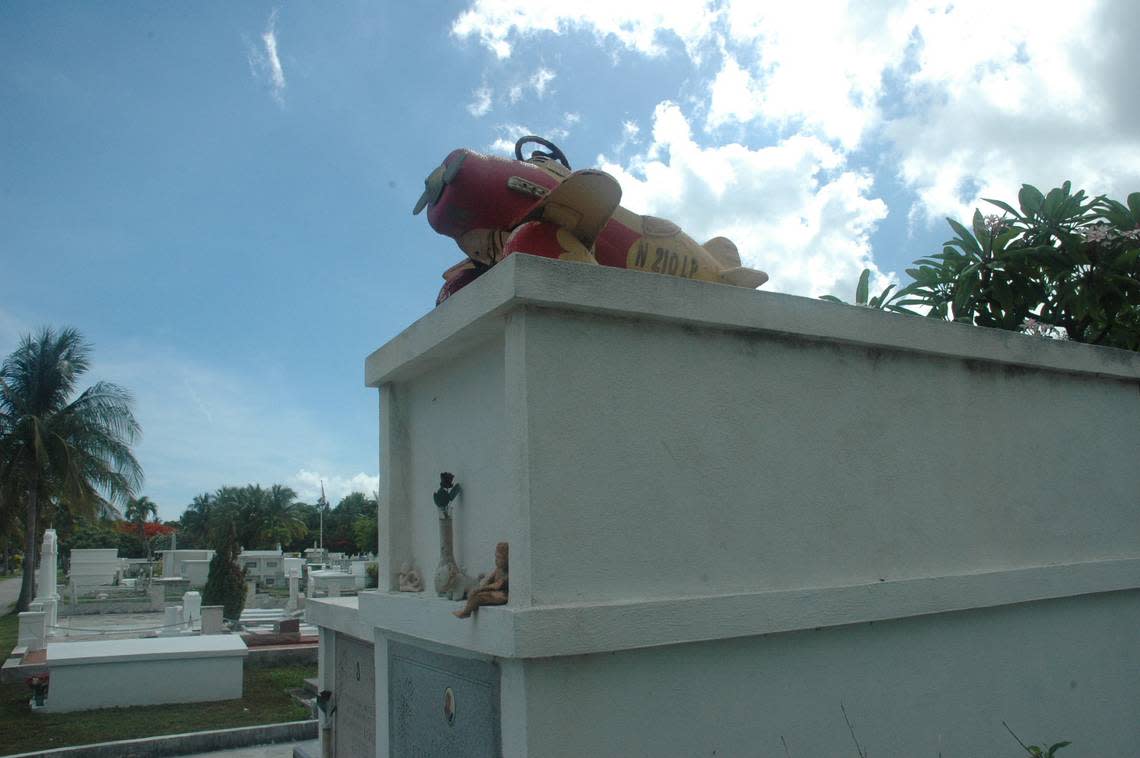
Published Oct. 28, 1987
By Susan Ornstein
See the headstone of the first white woman in Key West.
See the tombstone with 20 nicknames.
See the elaborate obelisk and mausoleum marking the resting place of one of Florida’s first millionaires - William Curry.
Get the last laugh with B.P. Roberts who had her final chiding comment to her husband engraved into her mausoleum: “I Told You I Was Sick.”
The macabre and fascinating secrets of the 21 history- packed acres of the Key West City Cemetery will be laid bare in tours.
Historian Sharon Wells, the creator of the tour, calls the 1847 cemetery with its sun-bleached mausoleums and queer, eye- catching decorations a “city within a city.”
“It’s really a nationally significant cemetery,” Wells said. “It’s incredible.”
The cemetery is awash in ethnic markings. In the Jewish section, where some of the founding storekeepers on the island are buried, many markers are in Yiddish. In Latin areas, some graves are shielded by roofs, a Latin custom, and others bear tiny photographs of the departed, inlaid in the headstones.
Because of the hard coral rock underlying the cemetery and the high water table, which would cause bodies buried in the ground to rot quickly, the tombs are above-ground.